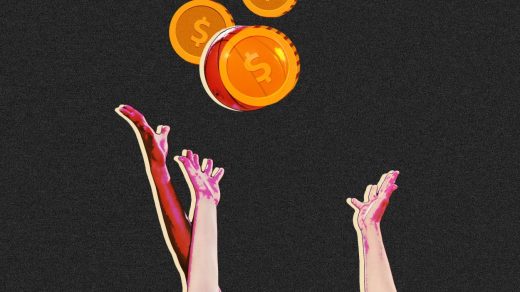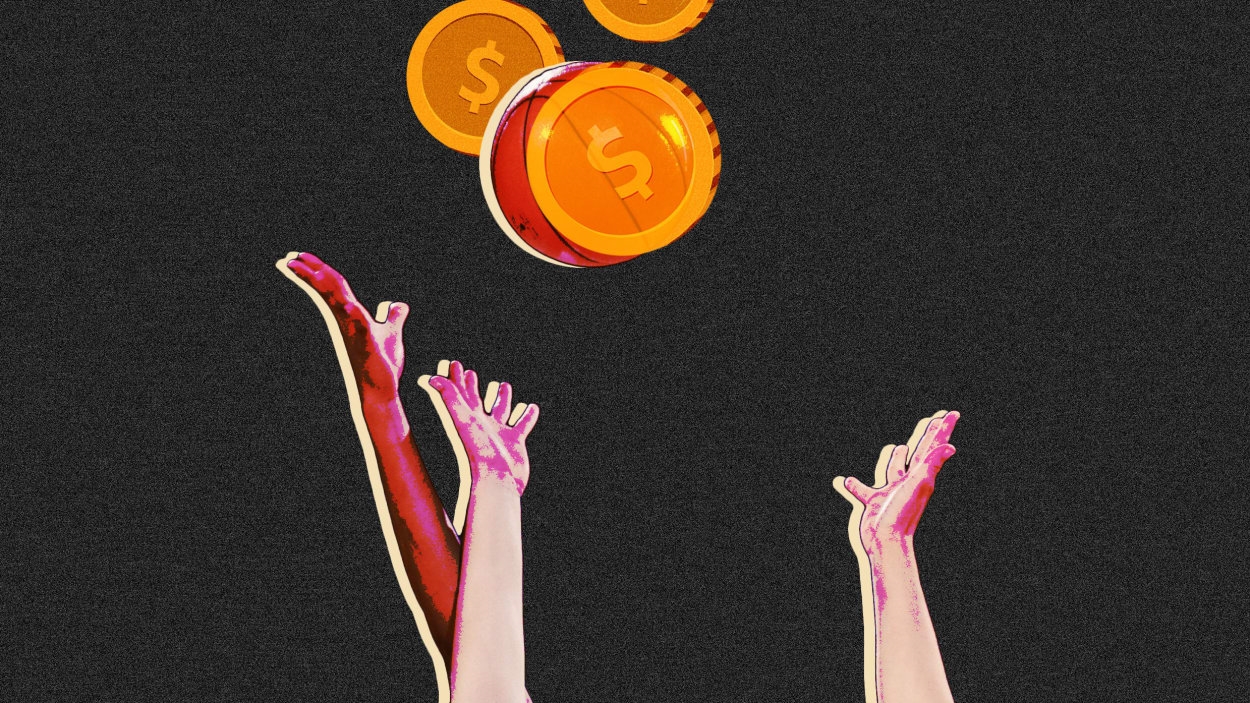How NIL has transformed student-athletes into athlete-influencers
By Drew Millard
“We have guys making $50 million a year just to dribble a stupid basketball,” Charles Barkley marveled during a recent, delightfully weird interview on ESPN. “We were going around high-fiving each other the first time Magic Johnson made a million dollars.”
While Johnson’s 1984 historic 25-year, $25 million contract made him the third player in NBA history to earn a million dollars in a single season, the back-in-the-day player even more responsible for aiding in NBA players’ accumulation of wealth was the rookie Michael Jordan, who that same year inked a deal with Nike that paid out $2.5 million over five years and came packaged with stock options whose worth, thanks largely to Jordan himself, would soon skyrocket. At the very highest levels of sports these days, even role players like the Lakers’ Austin Reaves have their own shoe deals. So while fat contracts are nice, this is America. Athletes are celebrities. Celebrities endorse stuff. That’s where the real money is.
This is increasingly true for collegiate athletes following the U.S. Supreme Court’s 2021 ruling that allows amateurs to profit off their name, image, and likeness (NIL) rights. Virtually overnight, America’s student-athletes gained a hyphen and were transformed into student-athlete-influencers.
On one hand, the unanimous Supreme Court decision was a long time coming. Given the value that college athletes create for universities, they deserve to be compensated for their labor. NIL deals give them an opportunity to do just that, and some athletes such as UNC-Chapel Hill basketball player Armando Bacot are choosing to put off going pro because they can now earn mid-six figures while completing their degrees.
On the other hand, the NIL system as it exists is an absolute quagmire. It’s governed by different laws in each state, it’s easily exploitable by the same wealthy booster groups who once operated entirely in the shadows (they’ve rebranded as “collectives”), and, as Bomani Jones put it in a March 2023 piece for The New York Times, it does nothing to address the NCAA’s “refusal to share its profits directly with the players most responsible for generating those profits.”
The NIL system basically works in two ways. Most obviously, it allows college athletes to endorse stuff. This is how LSU gymnast Livvy Dunne can get paid to make TikToks about Motorola cellphones and how Alabama defensive back Kool-Aid McKinstry can get paid to promote, uh, Kool-Aid. Dunne is a former USA national team member with 11.4 million followers across her social media platforms. And it took more than a kool nickname for Ga’Quincy McKinstry to attract the obvious sponsor: The five-star recruit earned Alabama Mr. Football accolades in that gridiron-obsessed state and later made the SEC All-Freshman team.
But athletes such as these are the one-percenters of the NIL system. The vast majority are cobbling together pizza money through low-fee promotional work on platforms like Opendorse or recording Cameo videos for a few bucks here and there: The Opendorse profile of former Houston basketball player Jarace Walker reveals he’s available to post about something on social media for you for just 79 bucks, and Walker was the eighth pick in the 2023 NBA Draft.
The second way that the NIL allows athletes to be paid is through accepting endorsement deals from the aforementioned “collectives,” which enable a school’s sports fans to pool together money that gets funnelled to athletes — including inducements to attract top high school recruits or transfer-eligible players. All the athletes have to do to collect their fees is endorse the collective, usually by signing autographs or appearing at a youth sports camp.
NIL collectives are essentially just loopholes that allow colleges to outsource the paying of players’ salaries to outside groups. The Supreme Court’s 2021 NIL decision simply provided legal cover for the kind of shady direct compensation booster programs have been providing to athletes for decades.
So far, there’s no clear evidence that throwing money at teenagers translates into winning. Last year, Sports Illustrated reported that Texas A&M boosters dropped lavish NIL money on its football players, and the school was rewarded with arguably the strongest freshman class in the country. Three of those freshmen proceeded to get suspended from the team indefinitely due to a “locker room incident” that occurred after one of the team’s seven losses that season.
Don’t hold your breath waiting for the NCAA to do what it should have done in the first place—introduce living wages for college athletes, with benefits such as guaranteed healthcare, that are standardized across intercollegiate athletics and paid for by the schools through the money those athletes generate. What we’re seeing instead, not surprisingly, is the same old game of pass the buck, as college sports officials like SEC commissioner Greg Sankey call on Congress to fix the system while state legislatures develop bills to undermine NCAA authority.
In the meantime, everyday college athletes—the ones who are dedicated to their teams as well as academics, but have no ambitions of going pro—will have to continue extending their daily to-do lists to include posting fit pics on Instagram or producing a TikTok celebrating the local bakery’s scones.
Drew Millard is the author of How Golf Can Save Your Life. His work has appeared in Vice, GQ, The Nation, The Believer, McSweeney’s, and the New York Times Magazine.
(22)



